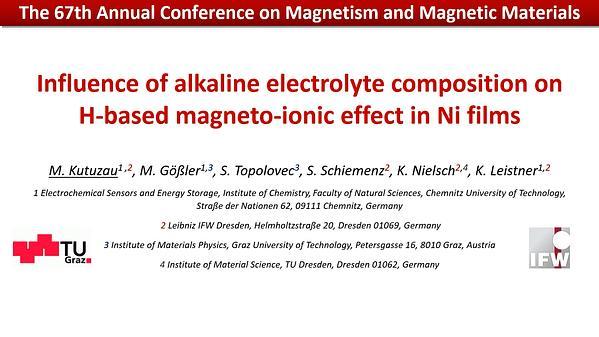
Premium content
Access to this content requires a subscription. You must be a premium user to view this content.

technical paper
Origin of transverse voltages generated by thermal gradients and electric fields in ferrimagnetic insulator/heavy
We compare thermal-gradient-driven transverse voltages in ferrimagnetic-insulator/heavy-metal bilayers (Tm3Fe5O12/W and Tm3Fe5O12/Pt) to corresponding electrically driven transverse resistances at and above room temperature1. The thermal gradient is created by an applying electric current in the lithographically patterned heater, electrically isolated from the device that is located approximately 50 μm away. We find for Tm3Fe5O12/W that the thermal and electrical effects can be explained by a common spin-current detection mechanism, the physics underlying spin Hall magnetoresistance (SMR)2,3. However, for Tm3Fe5O12/Pt the ratio of the electrically driven transverse voltages (planar Hall signal/anomalous Hall signal) is much larger than the ratio of corresponding thermal-gradient signals, a result which is very different from expectations for a SMR-based mechanism alone. We ascribe this difference to a proximity-induced magnetic layer at the Tm3Fe5O12/Pt interface4. By analyzing the ratio of electrically and thermally driven transverse voltages we find that the dominant contribution of the transverse spin-current is the intrinsic spin-Hall effect that is driven by the longitudinal electrical field either provided by the thermal gradient due to the Seebeck effect or by applying the electric current.
References:
1. Bose, A. et al. Origin of transverse voltages generated by thermal gradients and electric fields in ferrimagnetic-insulator/heavy-metal bilayers. Phys. Rev. B 105, L100408 (2022).
2. Nakayama, H. et al. Spin Hall Magnetoresistance Induced by a Nonequilibrium Proximity Effect. Phys. Rev. Lett. 110, 206601 (2013).
3. Meyer, S. et al. Observation of the spin Nernst effect. Nat. Mater. 16, 977–981 (2017).
4. Huang, S. Y. et al. Transport Magnetic Proximity Effects in Platinum. Phys. Rev. Lett. 109, 107204 (2012).

FIG.1. Results for TmIG/W. Hall resistance of TmIG/W for (a) out-of-plane magnetic-field sweep and (b) in-plane field rotation for a field magnitude of 2.7 kOe. Thermally-induced transverse voltages, (c) Vxy z and (d) Vxy φ, for a heater power of 630 mW and for two different heater spacings, d = 15 μm (closed squares) and 50 μm (open circles).

